Disclosure: This article contains affiliate links. We may earn a commission from purchases at no extra cost to you, which helps our travel content.
I've crossed many borders in my travels, but few have captivated me like the invisible line between Rivera, Uruguay and Santana do Livramento, Brazil. Here, no passport stamps mark your journey between nations—just a simple street crossing that locals traverse daily without a second thought. After burning out from New York's publishing frenzy, I've developed a fascination with these liminal spaces where cultures blend and blur. This border, marked only by a plaza and a few modest monuments, offers a rare glimpse into how political boundaries can become meaningless in daily life, while cultural differences continue to dance together in beautiful harmony.
Understanding the Borderless Border
The twin cities of Rivera (Uruguay) and Santana do Livramento (Brazil) exist in a unique symbiotic relationship that locals call frontera de la paz—the peaceful border. Unlike most international crossings with their intimidating checkpoints and stern-faced officials, here the countries blend together along Avenida Sarandí, the main commercial street that serves as the invisible dividing line.
On my first morning, I wandered down this avenue in a state of perpetual confusion, my phone constantly alerting me to network changes as it bounced between Brazilian and Uruguayan carriers. The only clear indicators of which country you're in are the subtle shifts in language on storefront signs and the currency being accepted.
What makes this border particularly fascinating is its status as one of South America's oldest examples of a conurbation—two cities from different countries that have grown into each other so completely that they function as one urban area. Locals cross between nations for daily shopping, dining, and socializing without paperwork or formalities, creating a microcosm of international cooperation that feels increasingly rare in our border-obsessed world.

💡 Pro Tips
- Download offline maps for both Uruguay and Brazil as your phone will constantly switch networks
- Carry both Brazilian reais and Uruguayan pesos as businesses often accept both currencies
- Learn basic greetings in both Spanish and Portuguese to navigate the linguistic border
A Tale of Two Currencies: Budget-Friendly Border Shopping
One of the most fascinating aspects of straddling this international line is the opportunity for strategic shopping based on fluctuating exchange rates and tax differences. Locals have perfected this art; I quickly learned to follow their lead.
The Uruguayan side, Rivera, is famous for its duty-free shops (free shops) where you can find everything from fine wines and chocolates to electronics and perfumes at significantly reduced prices. I spent one afternoon exploring these shops, picking up gifts for friends back home at prices that made my New York-calibrated budget breathe a sigh of relief.
Meanwhile, crossing to the Brazilian side of Livramento offers better deals on groceries and everyday items. I found myself adopting the local habit of mental currency conversion gymnastics, trying to determine which side offered better value for each purchase. My currency converter became indispensable for quick calculations between reais, pesos, and dollars.
For accommodation, I discovered staying on the Uruguayan side offered better budget options. I chose a modest but clean guesthouse just two blocks from the border, where the owner—fluent in Portuñol, the local Spanish-Portuguese hybrid language—provided invaluable tips on navigating the dual economy.
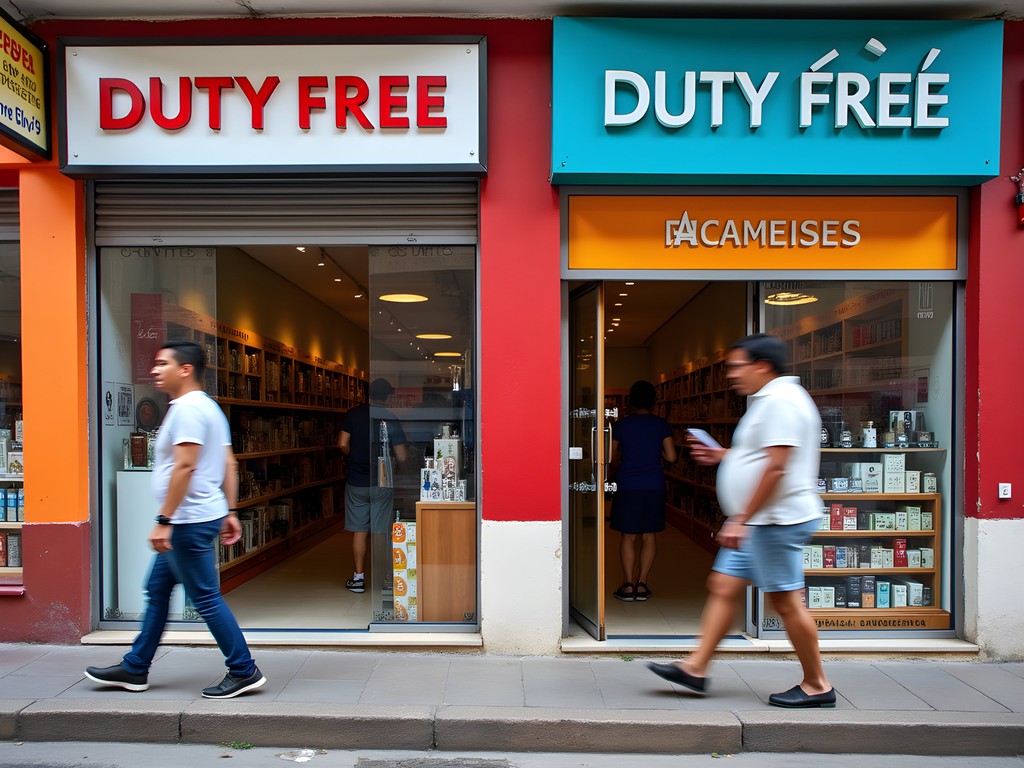
💡 Pro Tips
- Shop for luxury items and alcohol in Rivera's duty-free shops
- Buy groceries and everyday items on the Brazilian side where they're often cheaper
- Bring cash in both currencies as some smaller shops have limited card facilities
Capturing Dual Identities from Above
As a drone photography enthusiast, I was eager to document this unique border situation from above. After securing the necessary permissions (a process requiring separate applications in both countries—one of the few reminders that this is indeed an international border), I sent my travel drone skyward at dawn when the streets were quiet.
The aerial perspective revealed what's impossible to see at ground level: the subtle urban planning differences between the two nations. The Uruguayan side features a more traditional Spanish grid pattern, while the Brazilian neighborhoods show a slightly different architectural style and road layout. From above, you can actually trace the invisible border by these urban design differences.
One particularly striking view came from hovering above the International Plaza (Plaza Internacional), where the circular design is split precisely down the middle, with Brazilian and Uruguayan flags flanking the central monument. My drone filters proved essential for managing the harsh South American sunlight and capturing the subtle color differences between the two sides of the plaza.
For those interested in drone photography here, remember that flying across the international boundary requires authorization from both countries' aviation authorities. Despite the seemingly relaxed border, aviation regulations remain strictly enforced.

💡 Pro Tips
- Apply for drone permits at least two weeks before your trip through both countries' aviation authorities
- Fly during early morning hours when winds are calmer and fewer people are around
- Be respectful of the border—while it may seem informal, it's still an international boundary
Cultural Clay: Finding Ceramic Traditions in Border Territory
My passion for ceramics inevitably shapes my travel experiences, and this border region didn't disappoint. While not as renowned as some of South America's other ceramic centers, I discovered that both sides of the border maintain distinct pottery traditions worth exploring.
On the Uruguayan side, I spent an afternoon with Señora Elena, an elderly potter who creates pieces influenced by the indigenous Charrúa designs. Working from her small home studio just three blocks from the border, she showed me how local red clay is processed and formed into utilitarian pieces that carry echoes of pre-colonial patterns.
Crossing to the Brazilian side, I found a more Portuguese-influenced ceramic tradition, with brighter glazes and more decorative approaches. At a small workshop in Livramento, I was invited to try my hand at their wheel, my fingers remembering the techniques I'd learned during my sabbatical in Japan, though adapting to the different clay body was challenging.
For fellow ceramics enthusiasts, I recommend bringing a clay tools kit if you plan to participate in any workshops. Local studios have basic tools, but having your own familiar implements makes the experience more rewarding. I always travel with a small set that fits easily in my checked luggage.
What fascinated me most was how these ceramic traditions, like the communities themselves, have begun to cross-pollinate, creating border-zone pottery that incorporates elements from both national traditions—a perfect metaphor for the region itself.

💡 Pro Tips
- Visit Elena's studio on Calle Uruguay (Uruguayan side) on weekday mornings when she offers informal demonstrations
- Book the half-day workshop at Centro de Artesanato in Livramento at least two days in advance
- Pack ceramic pieces carefully—I wrap mine in my packing cubes for safe transport
Linguistic Borderlands: Navigating Portuñol
Perhaps the most fascinating cultural aspect of Rivera-Livramento is its unique linguistic situation. Here, the border has created Portuñol (or Portunhol)—a fluid blend of Portuguese and Spanish that locals slip in and out of with remarkable ease.
During my weekend stay, I found myself constantly adjusting my limited Spanish and even more limited Portuguese, often within the same conversation. In a café straddling the border, I ordered in Spanish only to have the server respond in Portuguese, neither of us acknowledging the switch as anything unusual.
To prepare for this linguistic adventure, I spent the weeks before my trip listening to language lessons on my language learning earbuds, which helped me recognize key phrases in both languages. These translator earbuds proved invaluable when conversations became too complex for my basic language skills, especially when discussing ceramic techniques with local artisans.
The language situation perfectly embodies what makes border communities so special—the pragmatic adaptability of people who live between worlds, creating hybrid solutions that outsiders might find bewildering but locals consider entirely natural. One elderly shopkeeper laughed when I asked which language we were speaking. 'Neither and both,' she said with a shrug. 'Just border talk.'
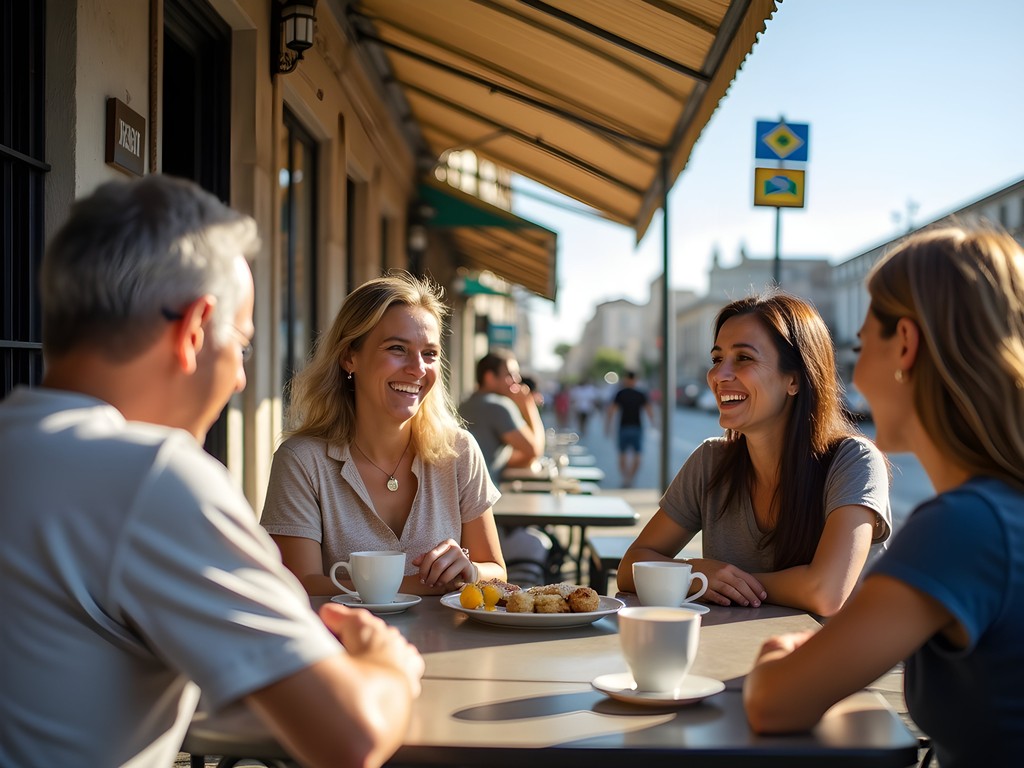
💡 Pro Tips
- Learn basic greetings in both Spanish and Portuguese before visiting
- Don't worry about perfect grammar—locals appreciate any effort to communicate in either language
- Listen carefully to how locals switch between languages to understand the natural flow of Portuñol
Final Thoughts
As my weekend in Rivera-Livramento drew to a close, I found myself lingering at the International Plaza, watching residents cross between countries with a casualness that felt almost revolutionary in our increasingly bordered world. These twin towns offer more than just a unique travel experience—they provide a glimpse into what peaceful coexistence might look like when we focus less on the lines that divide us and more on the humanity that unites us.
For the budget-conscious traveler seeking something beyond the usual South American circuit, this border region offers remarkable value and unforgettable experiences. From strategic shopping across two economies to witnessing the beautiful cultural blend of languages, foods, and traditions, Rivera-Livramento rewards the curious explorer willing to venture off the beaten path.
As I packed my newly acquired ceramics and prepared to leave, I couldn't help but feel I was taking with me not just souvenirs from Uruguay or Brazil, but from a third place altogether—one that exists in the spaces between defined identities, where borders become bridges rather than barriers. In our increasingly divided world, perhaps that's the most valuable souvenir of all.
✨ Key Takeaways
- This unique border allows easy exploration of two countries without formal border crossings
- Strategic shopping across currencies and tax systems can significantly extend your travel budget
- The hybrid Portuñol language demonstrates how borders can create new cultural expressions rather than divisions
- Local ceramic traditions reflect the distinct yet interconnected cultures of Uruguay and Brazil
- Fall offers ideal weather for exploring both sides of the border with fewer tourists
📋 Practical Information
Best Time to Visit
Fall (March-May) or Spring (September-November)
Budget Estimate
$30-50 per day including accommodation and meals
Recommended Duration
2-3 days
Difficulty Level
Moderate
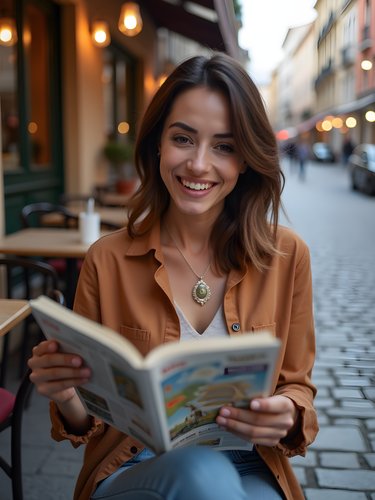
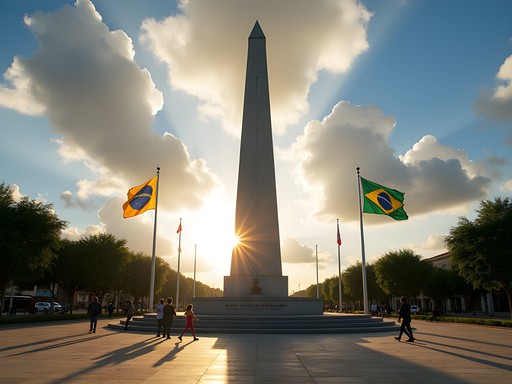
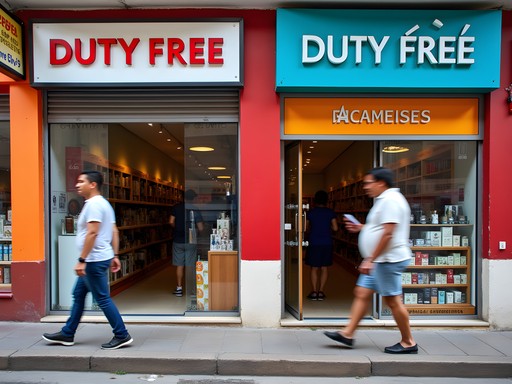











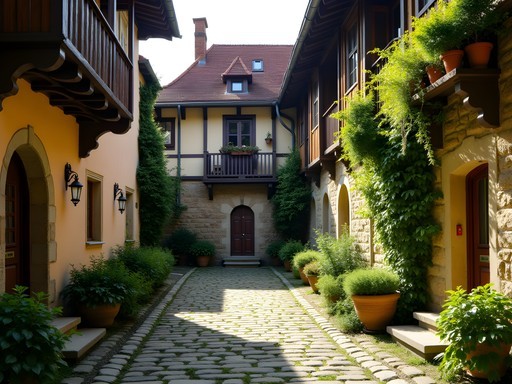

Comments
cityexplorer
How many days would you recommend staying to really experience both sides of the border?
Lily Thomas
I found 3 days to be perfect - one for each side and one for border-specific experiences like the International Plaza and ceramic workshops!
travelexplorer
OMG this is exactly what I've been looking for!!! Adding this to my South America bucket list RIGHT NOW! The idea of having breakfast in one country and lunch in another without even showing a passport is WILD! 😍
wildtime
Same! I didn't even know places like this existed!
nomadguide
Great post! I visited last year and would add that the viewpoint at Cerro del Marco offers amazing panoramas of both cities. You can really see how they blend together from up there. Also, the duty-free shops on the Uruguayan side had some great deals on spirits and perfumes. I used my pocket translator a lot since my Portuguese is non-existent, though many locals did speak some English or Spanish.
John Hart
Fascinating piece on Rivera-Livramento, Lily. I visited this border area in 2023 and was equally struck by the fluidity of movement between countries. The currency dynamics you mentioned create an interesting economic ecosystem - I observed locals strategically shopping based on exchange rates. Did you notice how the language shifts too? That peculiar blend of Portuguese and Spanish (often called 'Portuñol') adds another layer to the cultural fusion. The ceramic traditions you highlighted are indeed worth exploring - I spent an afternoon with a local artisan who explained how techniques from both countries have merged over generations.
cityexplorer
John, did you find it easy to use credit cards there or is cash better? Planning a visit next month.
John Hart
I found having both currencies in cash most practical, especially for smaller shops. Cards work in larger establishments, but you miss out on some of the currency advantages. I'd recommend carrying some Brazilian reais and Uruguayan pesos.
wildtime
Never knew about these border towns! So cool that you can just walk between countries!
travelmaster
Really want to visit now! How many days would you recommend staying? And did you have any issues using credit cards across both sides?
Lily Thomas
Hi @travelmaster! I'd say 2-3 days is perfect to explore both towns thoroughly. As for cards, I had no issues with my Visa in most places, but smaller shops and the ceramic workshops were cash-only. I used my travel card which was great for getting both Brazilian reais and Uruguayan pesos without high fees.
travelmaster
Perfect, thanks for the tips! Adding this to my South America itinerary for sure!
Douglas Bradley
Fantastic write-up on Rivera-Livramento, Lily! I visited this border area last year and was equally fascinated by the seamless transition between countries. Your section on currency exchange strategies is spot-on - I found the best rates at the smaller cambios about two blocks from the main plaza rather than right at the border. Did you notice how the architectural styles subtly shift as you move from the Uruguayan to the Brazilian side? I spent hours photographing those transitions from the hilltop viewpoint you mentioned. The ceramic workshops were closed when I visited (holiday), so I appreciate you highlighting that experience!
Lily Thomas
Thanks Douglas! You're absolutely right about those smaller cambios - much better rates! And yes, I was fascinated by the architectural transitions too. Sorry you missed the ceramic workshops - they were definitely a highlight!
travelmaster
Where's that hilltop viewpoint exactly? Going there next month!
Douglas Bradley
@travelmaster It's called Cerro del Marco - about a 15-minute walk from the International Plaza. There's a small park at the top with great views of both towns. Best at sunset!
travelone
Such a cool concept! Never heard of a border you can just walk across without any checks.
Lily Thomas
Thanks @travelone! It's definitely one of the most unique border experiences I've had. You literally just cross a street!
dreamace
Your photo of the border marker with people casually walking across is exactly what makes these towns so special! I was there in 2023 and loved how the locals barely noticed they were crossing countries. The Sunday market stretching across both sides was my favorite experience.
luckystar2143
Oh yes, the Sunday market! I forgot to mention that - such a cool mix of products and languages all in one place!
George Hayes
We took our kids (8 and 11) to Rivera-Livramento last month and they were fascinated by the concept of breakfast in one country and lunch in another! For families visiting, I'd recommend the small interactive museum near the plaza that explains the border history with bilingual exhibits. Also, the ice cream shop on the Brazilian side was a huge hit - they do a special flavor that uses fruits from both countries. My daughter still talks about it! The ceramic workshop you mentioned offers family sessions on Saturday mornings where kids can make small pieces to take home.
Venture X
Premium card with 2X miles, $300 travel credit, Priority Pass